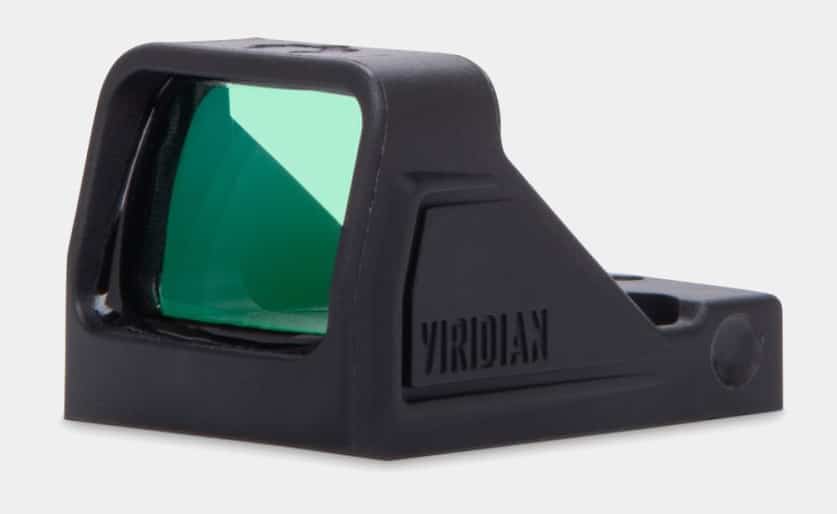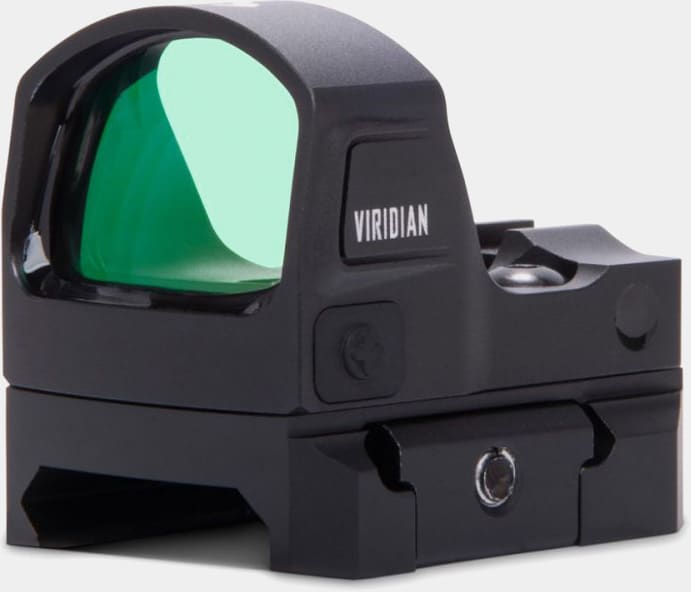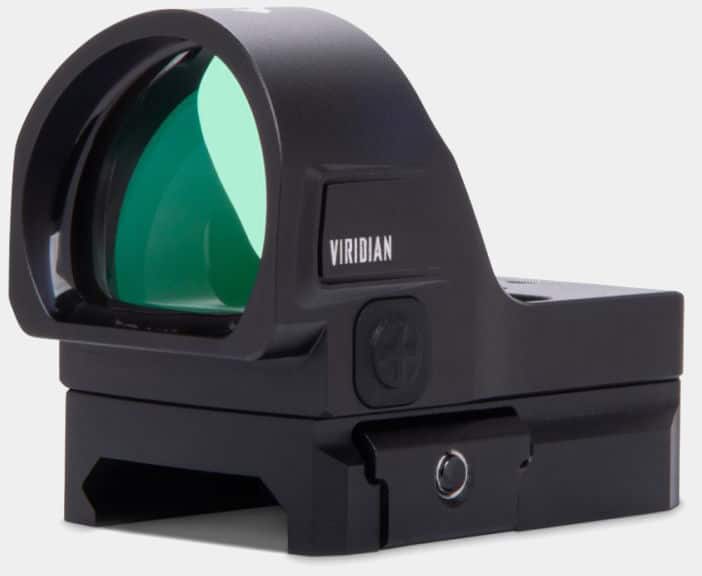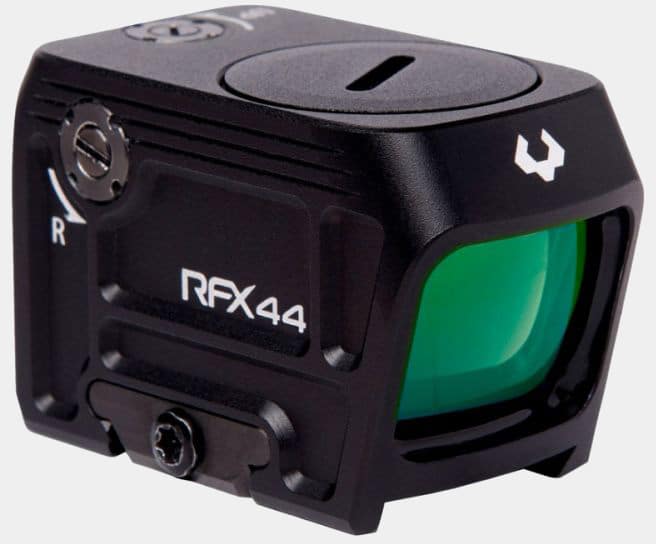Viridian RFX Reflex Sight Round-Up

I had the good fortune of being invited out by Viridian Weapon Technologies to a live-fire range demo that they set up in my neck of the woods out in the Arizona desert.
For those who may not be familiar with the brand, Viridian specializes in green dot optics and lasers (as well as red laser options), lights, as well as other advanced weapons-mounted technologies such as video-capture devices for LEO.
The innovative tech-centered brand promotes the color green as a scientifically superior color choice for reticles and lasers because the human eye (on average) can detect green better than other colors in the spectrum. In my personal experience, I do tend to favor the green reticle over the widely available red options on the market.
Never one to turn down the opportunity to take a sneak peek at new gear, I drove out to the event and spent the day talking a bit with their team about the latest releases. I got to work firsthand with their full line of diverse optics at the demo across a number of platforms, ranging from pistol, carbine to shotgun, with a little full-auto fun thrown into the mix for good measure.
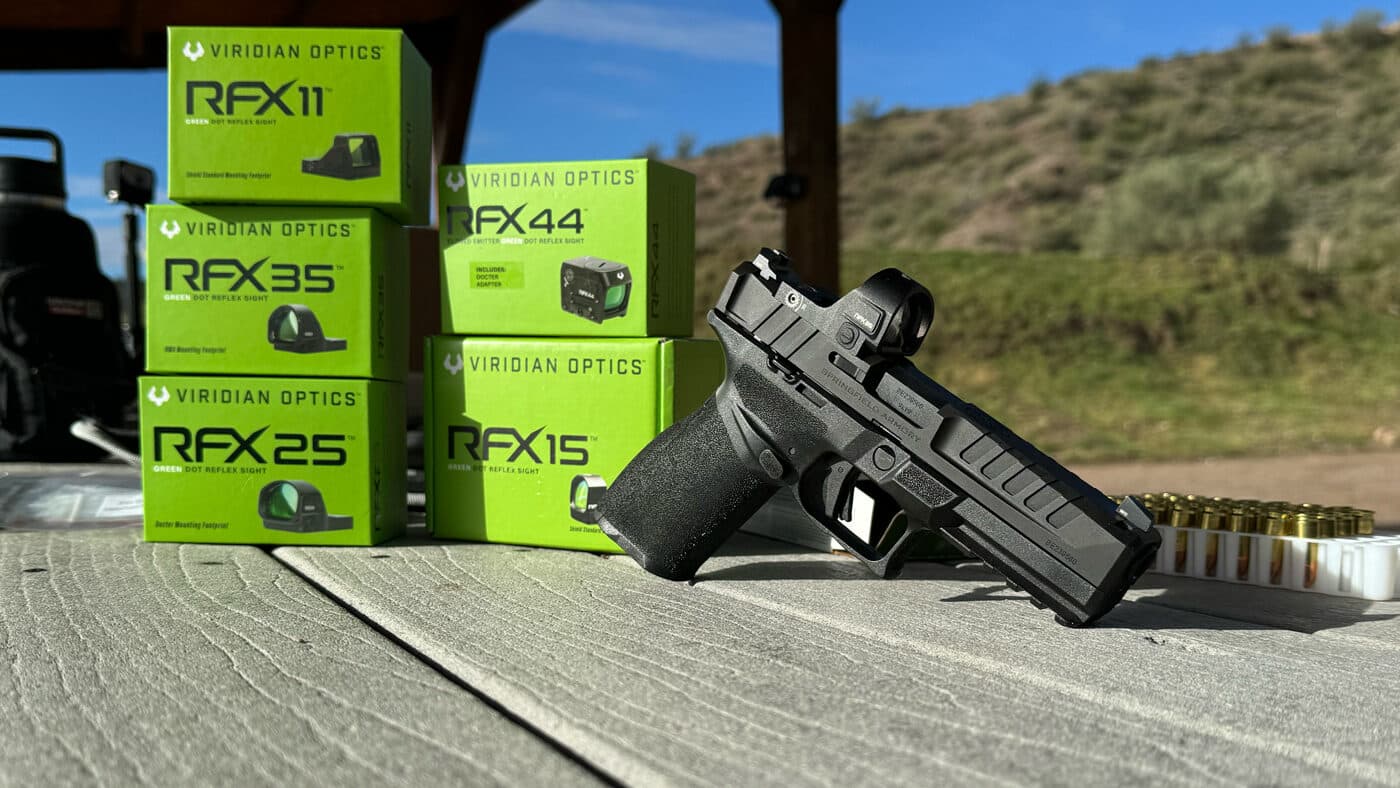
I particularly enjoyed shooting the Echelon pistol they had at the event with their RFX25 on it and was particularly excited to receive five of their RFX optics to do work with independently after the event. Why? Because I enjoy working with interesting gear like this, and also because I was very curious how each would pair with the Echelon pistol in a side-by-side comparison.
Best Platform?
Since the release of the Echelon, it has quickly become one of my favorite polymer-framed pistols to work with, bar none. One of the most unique aspects of the pistol that I believe made it a perfect fit for this round up, and that I found to be particularly innovative, is its Variable Interface System.
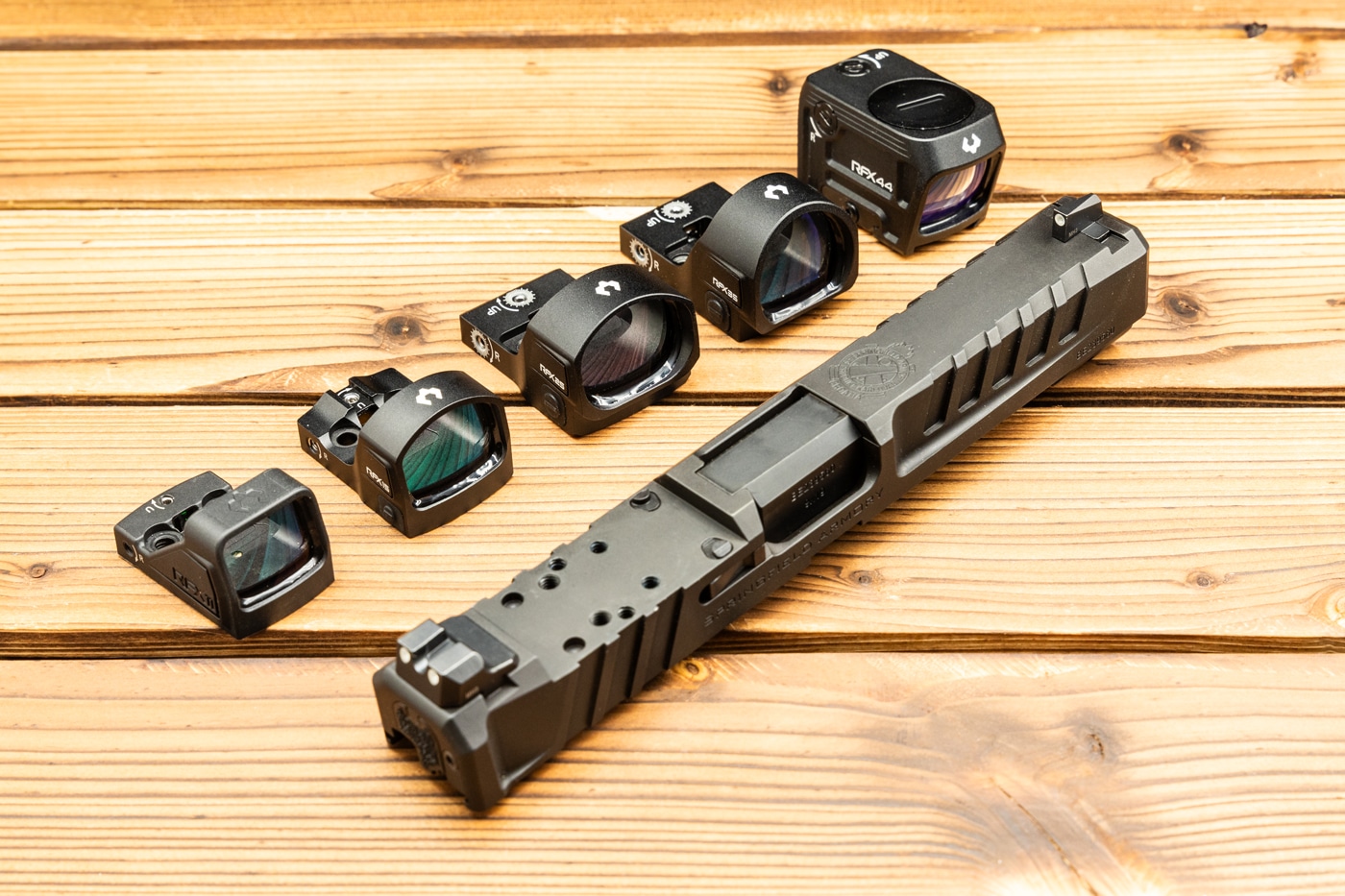
This unique optics-mounting system essentially allows shooters to easily and quickly utilize more than 30 of today’s most popular reflex sights without the need for adaptor plates. For those of us who enjoy shooting with a dot and also like to experiment with the latest and greatest optics on a singular dedicated platform, this capability is a game changer.
The way it works, in a nutshell, is that Echelon’s Variable Interface System employs, under its removable cover plate, a range of holes cut into its slide. These, along with self-locking pins that accommodate the mounting hole patterns of a wide range of popular red dots, allow you to direct mount the optics to your pistol and co-witness your iron sights with the vast majority of them. This system eliminates, in most cases, the need for cumbersome mounting plates.
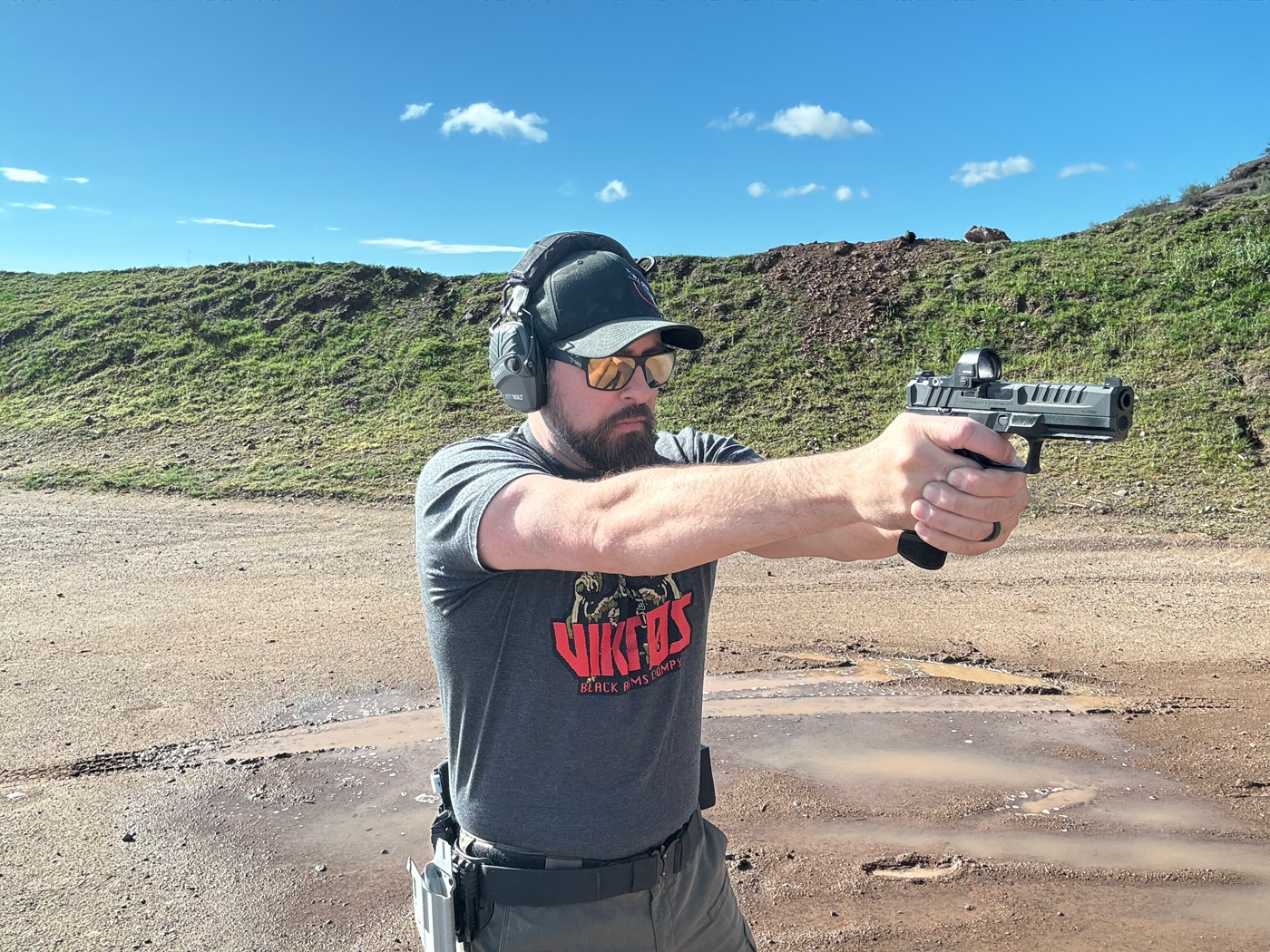
Additionally, Springfield does offer plate systems for the Aimpoint ACRO and Docter footprints. The Echelon’s convenient optics mounting capability is one of the reasons why, when the opportunity arose to get my hands on five of Viridian’s new RFX optics, the Echelon was a no-brainer as the platform of choice with which to pair them.
The full spread of Viridian optics being worked with for this review’s purpose include the RFX11, RFX15, RFX25, RFX35 and RFX44. These units run the gamut in terms of form factor, from one of Viridian’s smallest pistol optics — the RFX11 — to one of its larger format fully enclosed emitter designs — the RFX44.
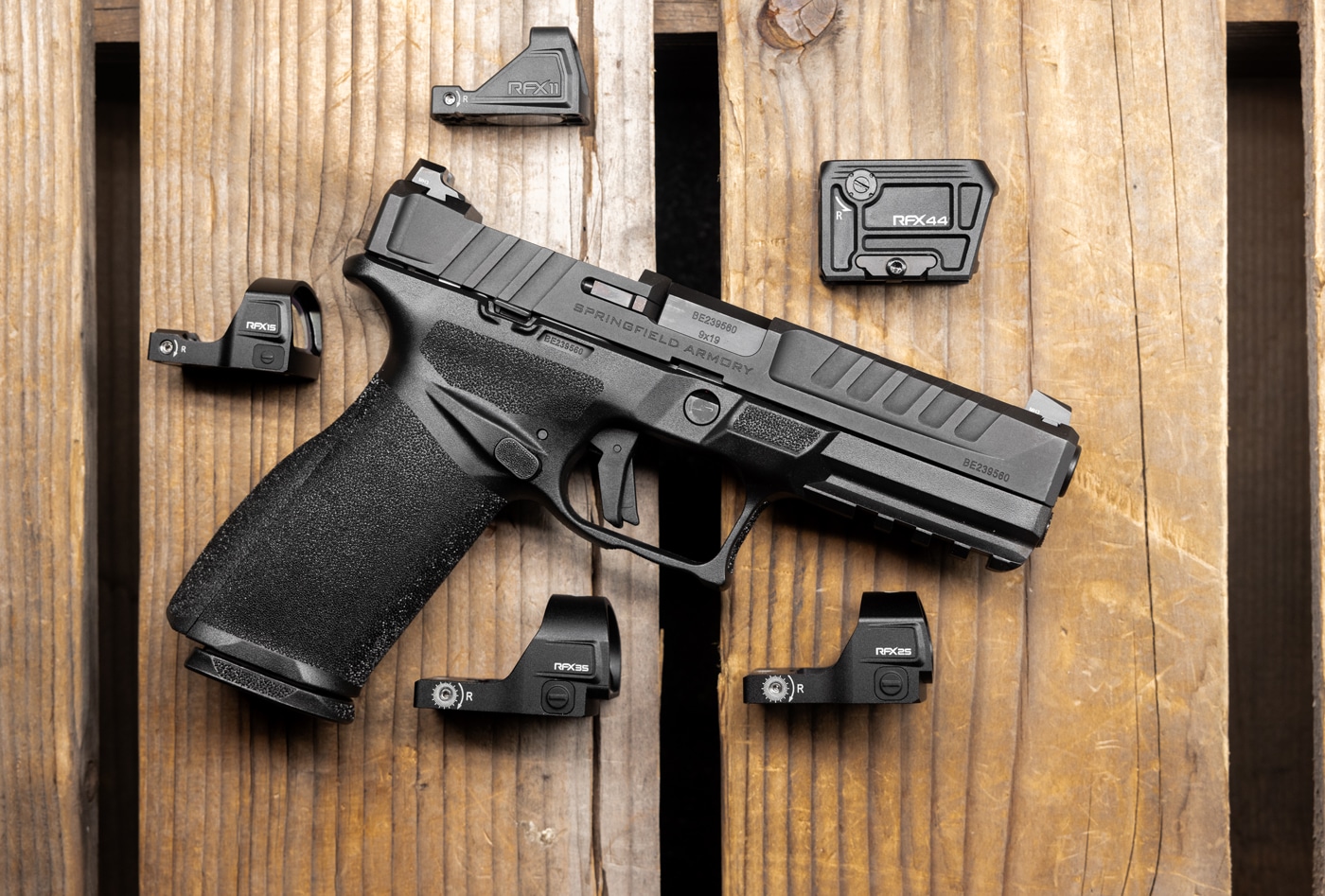
While I will relay the basic specs for each optic in the line, I urge you to dive deep into the Viridian website if you really want to get down into the nitty-gritty tech-specs on each individual optic.
The areas of focus for this round-up will be to provide general first impressions, and also focus on these core aspects: ease of mounting, housing design, window size and optical clarity, brightness and sharpness of dot, and overall performance during range use. Let’s get to it.
RFX11
First up, I tested out the RFX11. When unboxing the RFX11, I was surprised with just how compact this thing is. My initial impression was that it’s definitely a contender in terms of form factor as a subcompact or micro-compact CCW optic.
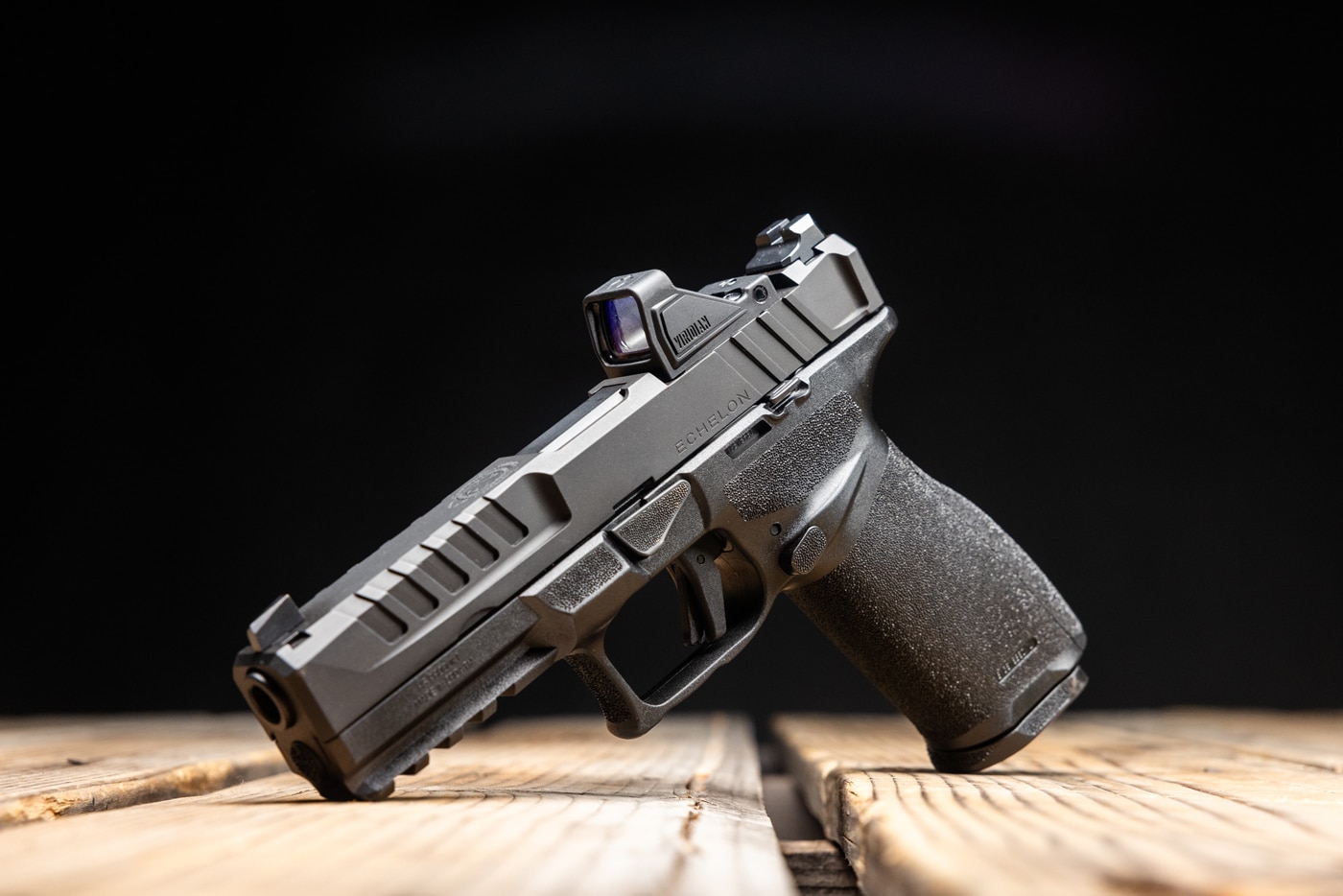
The high-strength thermo-molded polymer housed RFX11 mounted easily and natively to the Echelon using its Shield RMSc footprint. It sits nice and low on the slide, but not so low that you lose the co-witness capability. Its sleek and durable housing design looks great, and it weighs a mere 4 oz.
As one of the lightest reflex sights on the market, it’s barely noticeable when mounted on the Echelon. The 16x22mm window is clear and would be ample if it were on a sub-compact or micro-compact pistol.
First shots of the day with it were accurate and easy. However, as am used to running larger-windowed reflex optics on my Echelon, I did have to adjust to using this smaller optical window. However, where it shines (literally) is the extremely vibrant and crisp green 3 MOA dot, which is very easy to acquire.
The instant-on and auto shut-off features and the ambient light sensor are also impressive features to be included in such a tiny package. With over 30k hours of claimed battery run time as well, I will say I was impressed with the optic in general, I believe it would be a great fit on a Hellcat or even the Hellcat Pro, and runs just fine on my Echelon.
RFX11 Specifications
- Footprint: Shield RMSc
- Dimensions: 1.6″ x 0.95″ x 0.89″
- Weight: 0.44 oz.
- Lens Dimension: 16x22mm
- Lens Coating: Multi-coated glass
- Dot Size/Color: 3 MOA, green
- Housing Material: High-strength thermo-molded polymer
- Environmental Rating: IPX4
- MSRP: $199
RFX15 Reflex Sight
Stepping up in size, the RFX15 was next one I installed atop the Echelon. The Shield RMSc footprint allowed for direct mounting to the slide, which was a breeze. It also included a Picatinny mount, and I could potentially see it as a candidate on a carbine as an offset-mounted optic. I really like the low-profile fit with the direct mount to the Echelon, though.
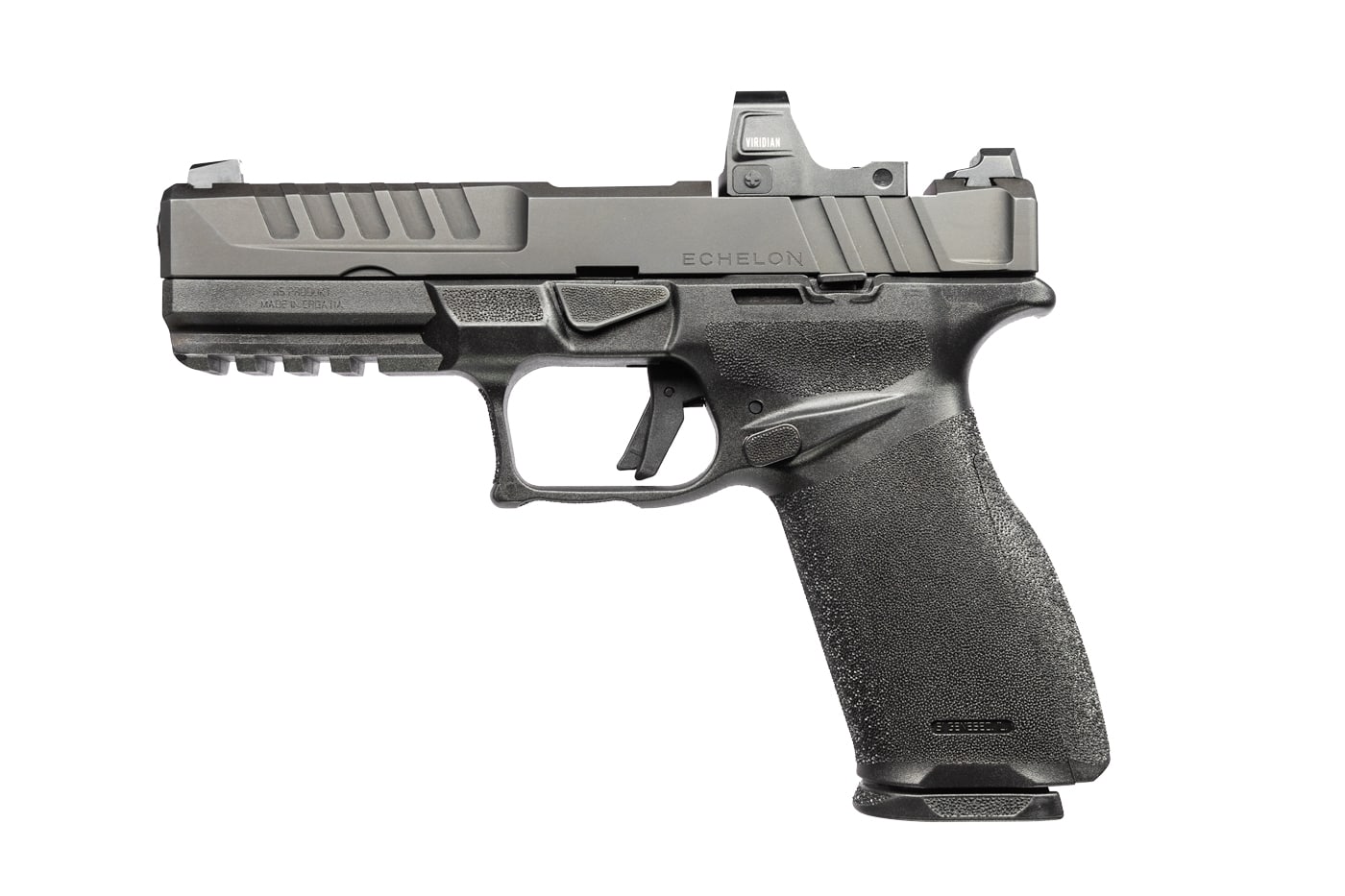
This optic features a 3 MOA green dot, a 17x24mm viewing window, and a high-grade aluminum alloy body that makes it extremely durable and lightweight. The RFX15 includes eight visible brightness settings and two night vision brightness settings, which are controlled with a rubberized and tactile positive brightness control on the left side of the optic and a matching negative button on the right.
Shooting with the RFX15, once I dialed it in with the easy-to-adjust windage and elevation controls, was comfortable and intuitive. The size of the window and exceptional clarity made acquiring the green dot extremely easy. I detected no clarity issues or real “blooming” even at higher brightness settings during daytime outdoor shooting, and it held zero just fine through multiple mags and drills. Overall, I felt like this optic was well-suited for the Echelon.
RFX15 Specifications
- Footprint: Shield RMSc, Picatinny mount
- Dimensions: 1.61” x 0.98” x 0.96”
- Weight: 0.65 oz.
- Lens Dimension: 17x24mm
- Dot Size/Color: 3 MOA, green
- Housing Material: 6061-T6 aluminum alloy
- Environmental Rating: IPX6
- MSRP: $289
RFX25 Reflex Sight
The RFX 25 was up next. In order to mount this optic, I used the Springfield Armory Docter plate adapter. Although a nominal amount, the plate adapter did add a small bit of height to the overall placement of the optic, as opposed to the low-profile direct mount that the previous two optics afforded. However, I did enjoy the slightly larger 20x28mm window size and the overall contouring and shape of the high-strength aluminum housing.
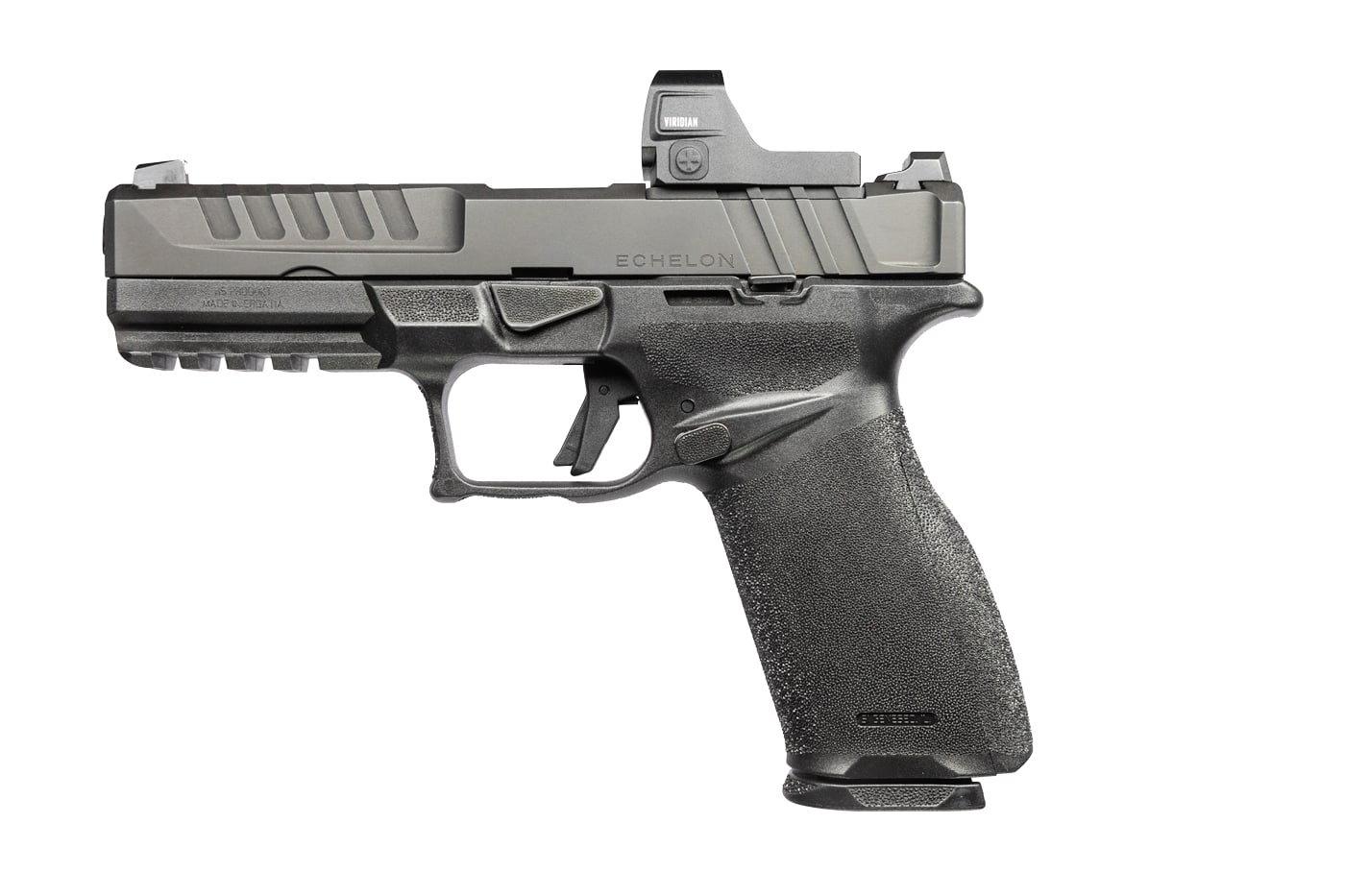
The clear, distortion-free window made the extremely vibrant green dot easy to acquire during various range drills. I also experimented with the range of brightness settings when shooting this one by using the similar positive/negative tactile button controls, and it was easy to acquire throughout all of the mid to higher settings against the harsh mid-day sun in the desert range I was shooting at.
This model also features the “must-have” tech I insist on having in my reflex optics nowadays, such as the instant-on and auto shut-off features and a solid IPX6 waterproof rating.
RFX25 Specifications
- Footprint: Docter/Burris FF/Vortex Venom
- Dimensions: 1.85″ x 1.22″ x 1.06″
- Weight: 0.75 oz.
- Lens Dimension: 20x28mm
- Dot Size/Color: 3 MOA, green
- Housing Material: 6061-T6 aluminum alloy
- Environmental Rating: IPX6
- MSRP: $289
RFX35 Reflex Sight
The RFX35 utilizes the RMR footprint, which directly mounts to the Echelon. Out of all of the optics provided to me for this round-up, I believe out of the box that the RFX35 was my favorite in terms of form factor. With a 22x26mm objective lens, the large circular-style window within the aluminum housing just felt optimal out of the group of optics for me.
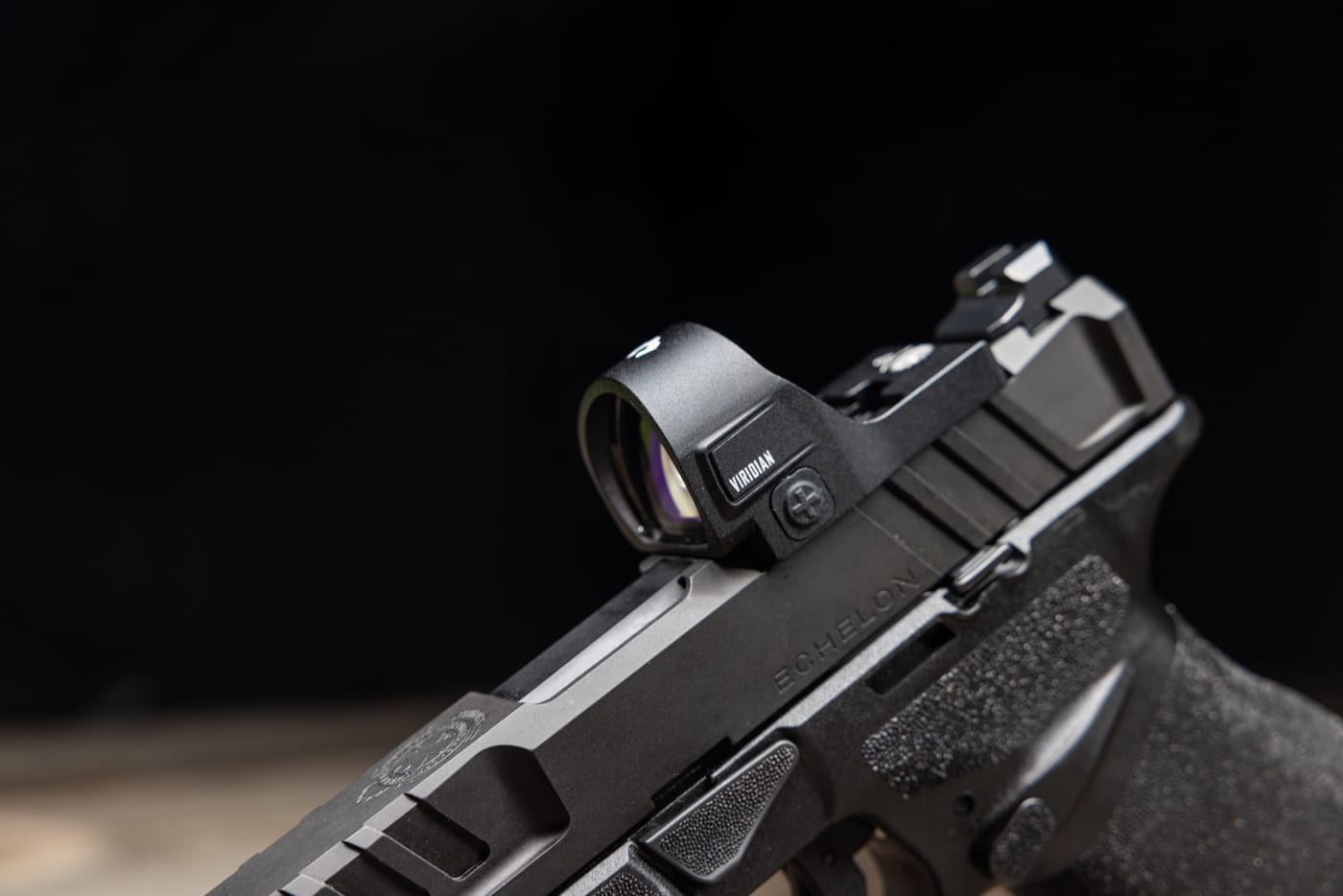
I dialed this one in after directly mounting it and was not disappointed. The optic’s design and housing contours nicely to the frame of the Echelon and looks great on the gun. The 3 MOA dot was as crisp, clean and easy to acquire as all of the other models, but I really enjoyed the large window that it lived within on the RFX35.
It also has auto-on and auto-off features that check the tech boxes for me and help me conserve battery life when not in use. Out of the open-emitter designs being reviewed in the line-up, I would say that the RFX35 was my favorite.
RFX35 Specifications
- Footprint: RMR
- Dimensions: 1.93″ x 1.16″ x 1.2″
- Weight: 1.0 oz.
- Lens Dimension: 22x26mm
- Dot Size/Color: 3MOA, green
- Housing Material: 6061-T6 aluminum alloy
- Environmental Rating: IPX6
- MSRP: $289
RFX44 Reflex Sight
The RFX44 is the only closed-emitter optic in the Viridian line I worked with for this review. I personally think closed emitter designs in general are awesome from a technology and capability standpoint. In my own experience, I have typically run them on carbines and seldom have included them on pistols. I was eager to see the difference during a course of training between the enclosed design versus four of its much smaller form-factor, open-emitter counterparts.
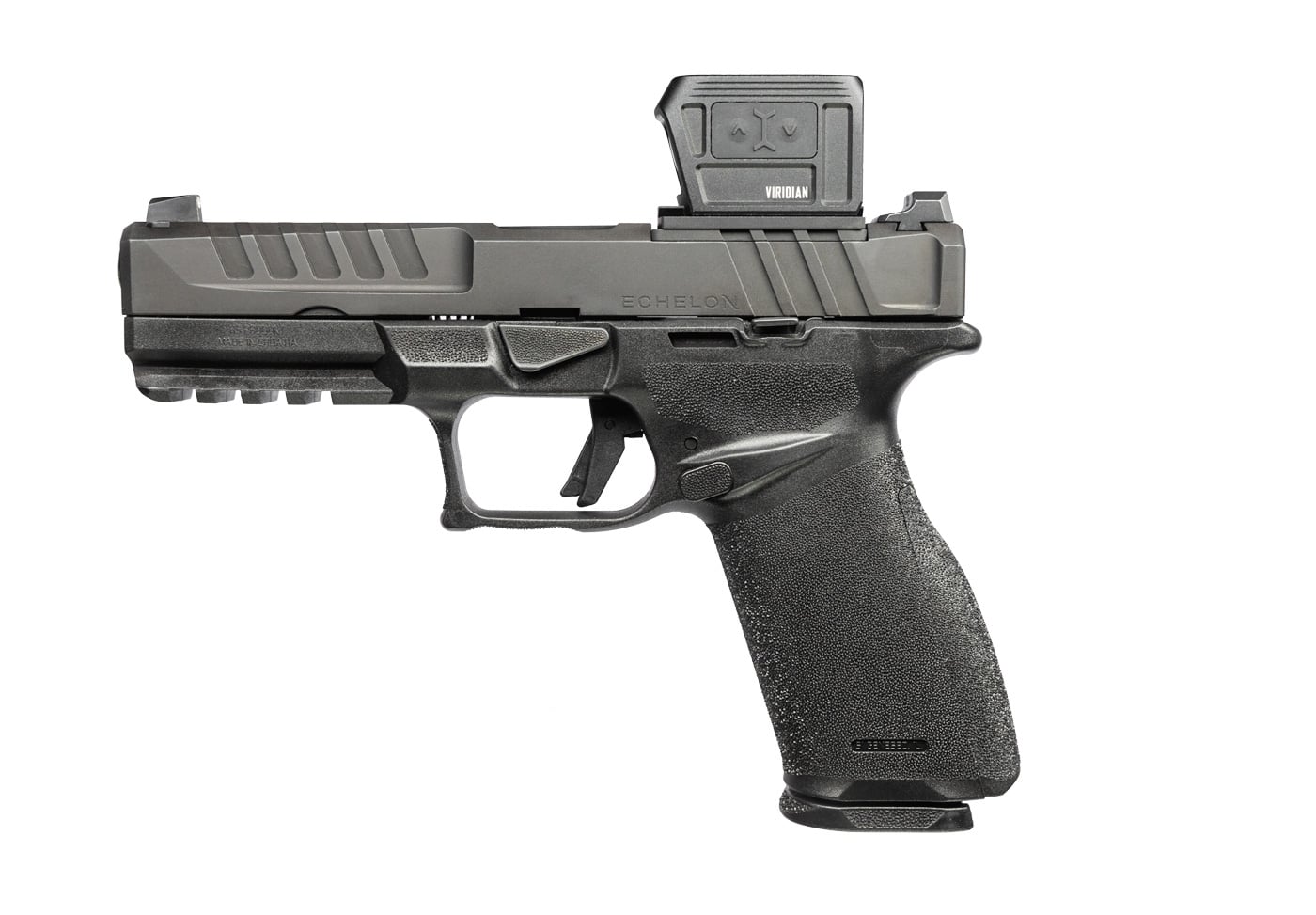
Trying to remain objective, I mounted the little school bus on top of the Echelon using the ACRO plate adaptor method, which inevitably adds a bit of profile height due to stacking the unit, making for an even taller little castle sitting atop the gun. Alright, you get it — it’s bigger and bulkier.
Enough picking on its size; let’s focus on the positives of the design, of which there are more than a few. For one, Viridian did a solid job on the overall form factor and design by actually decreasing the footprint of the unit by including a top-loading battery compartment and situating the internal electronics within the top of the unit, versus the side or bottom. This design consideration also lowers the window of the unit, allowing for better co-witnessing capability with the irons.
The ample 5 MOA green dot is also shielded by the enclosed emitter design from dust and debris. Basically, closed-emitter designs reduce the chances of dust, moisture and other gunk from being able to obstruct the LED from emitting light onto the glass. This makes closed-emitter designs a more durable option for adverse conditions.
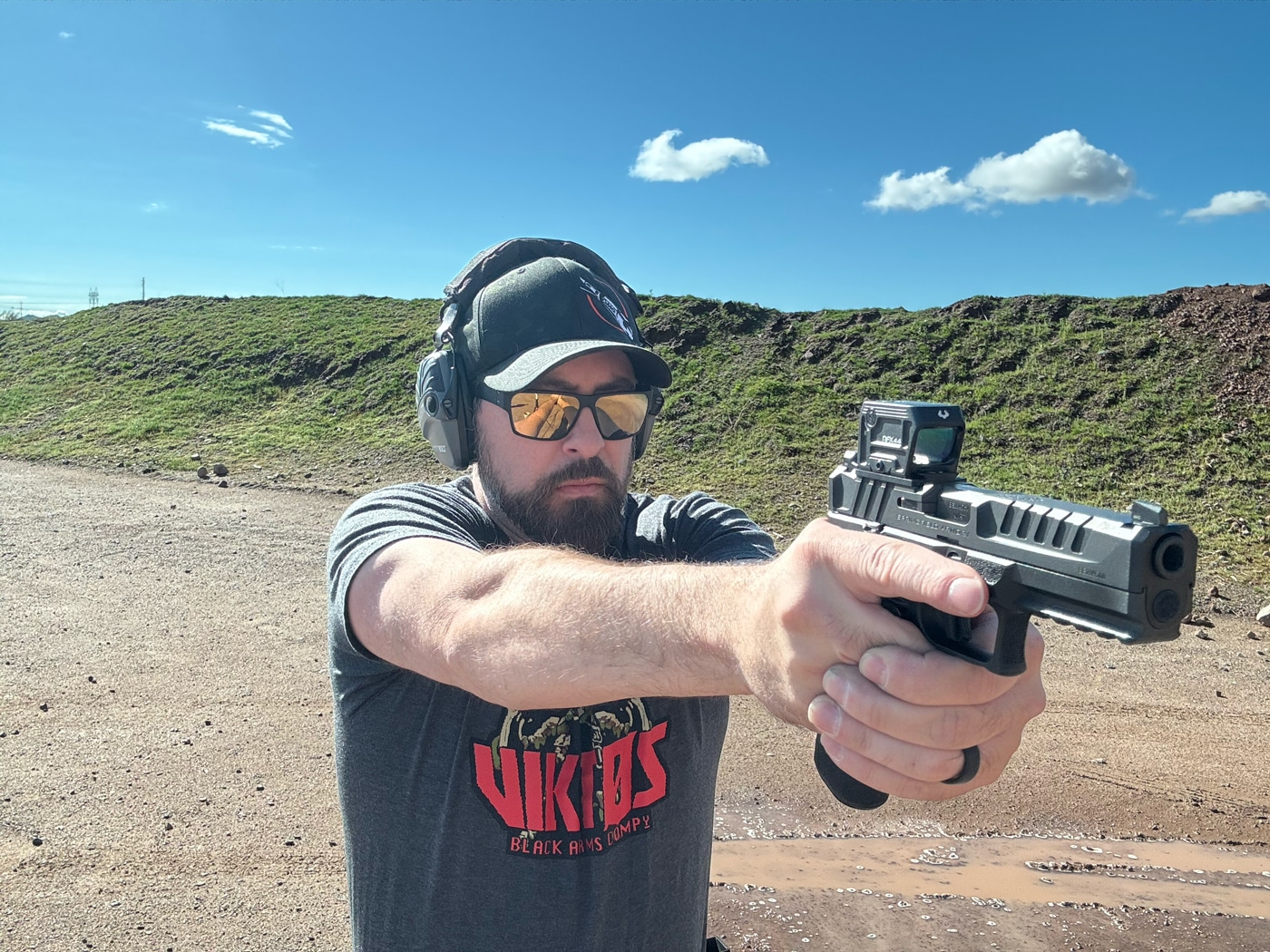
The multi-coated glass on the RFX44 was also crystal clear, and the green dot is super vibrant, clean and clear across brightness settings, which include 10 brightness settings (eight visible & two night vision settings). The RFX44 also features audible and tactile adjustments to control 90 MOA of elevation adjustment and 60 MOA of windage.
All in all, shooting with the unit at the range was enjoyable, and I can understand why a good number of shooters prefer closed-emitted optics like this one.
RFX44 Specifications
- Footprint: ACRO
- Dimensions: 1.59” x 1.02” x 1.15”
- Weight: 1.59 oz.
- Lens Dimension: 21×16.5mm
- Dot Size/Color: 5MOA, green
- Housing Material: Machined 6061 aluminum with hard coat anodization
- Environmental Rating: IPX6
- MSRP: $399
Conclusion
In conclusion, I believe Viridian has developed a wide array of feature-rich optics for pistol shooters. I am a firm believer that gear selection is highly personal and requires time and experimentation to find what works best for each individual. What works for one may not suit another. I really appreciated the similarities and differences between each of Viridian’s RFX pistol optics in this round-up and realized during my range session that I enjoyed certain aspects of each.
My recommendation when it comes to selecting an optic for your firearm, whether it’s your EDC, range-plinker or precision gun, is that you just have to try options, take them for a test drive if possible, and see what suits your eyeballs. Spend time experimenting, putting them through their paces, and work them hard to make sure they’ll hold up in situations that really count.
The technology is always evolving and, with a pistol like the Echelon it’s never been easier to try numerous optics options and stay on top of the trends.
Editor’s Note: Please be sure to check out The Armory Life Forum, where you can comment about our daily articles, as well as just talk guns and gear. Click the “Go To Forum Thread” link below to jump in and discuss this article and much more!
Join the Discussion
Featured in this video
Read the full article here



